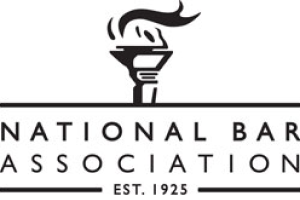Bendix Corporation

The Bendix story starts like so many others. An entrepreneurial individual with an innovative idea that was patented, and mass produced so that eventually millions were made. In this case the individual was Vincent Hugo Bendix and he invented a new starter for combustion engines.
Victor Bendix registered five patents in the Canadian patent office for ever improved engine starters between 1919 and 1926. He also registered a first brake design in 1925 when he patented the “duo servo” braking system for articulated automobile wheels. He worked with French engineer, Henri Perrot, who sold him the rights to his designs for use in North America. In 1924, before he registered his brake patent, Victor Bendix had incorporated and named the company the Bendix Brake Company.
The Bendix company was physically located in South Bend, Indiana, where they started a manufacturing facility in a plant that formerly produced wagons. The Bendix facility grew rapidly and by 1928 Bendix was producing 3,600,000 sets of brakes annually, primarily for General Motors. To ensure continuity of supply General Motors purchased 24% of Bendix stock when the company first offered shares.
In a bold expansion Bendix acquired the Eclipse Company located in Elmira, New York in 1929. Eclipse had been making Victor Bendix’s patented starters under licence since 1914. At the time Vincent Bendix did not have the manufacturing capability to produce his starters but by 1928 his inventions had made him a millionaire and he was able to buy the company. Eclipse also had a contract to supply General Motors with starters that were installed on assembly lines in Oshawa, Ontario and Detroit, Michigan.
Bendix next adapted his braking systems for use on airplanes as the technology and manufacturing process was similar. The aviation market was growing quickly, and Bendix was determined to join in. Bendix Aviation was incorporated in 1929. To promote his products Victor Bendix sponsored a transcontinental air race in 1931 where the Bendix trophy was awarded annually until the races ceased in 1962.
Vincent Bendix did not stop with starters and brakes. He designed and developed equipment for use in automobiles, heavy equipment and aircraft. He encouraged innovation by employing a fleet of engineers and by 1940 the company held over 5500 patents.
Bendix incorporated asbestos in their brake and clutch products. Asbestos had been found to increase the durability of friction products that were subject to heat. This placed auto, aircraft and railway mechanics at high risk of exposure as the residual dust caused by use easily became airborne when the surrounding equipment was dismantled. Asbestos content was up to 50% of brake pads and shoes at the height of the asbestos craze in 1972.
Vincent Bendix died in 1945 leaving his company in the hands of Ernest Breech an executive who was stolen away from General Motors in 1942. Bendix experienced tremendous growth during the second world war. Their products were installed on virtually all equipment used by the Military. At that time, it was required that asbestos materials be used in military equipment as a means of keeping service men safe as asbestos manufacturers had not shared their knowledge that breathing in asbestos dust was life threatening.
In returning to peacetime production Bendix suffered significant losses including General Motors as a shareholder. GM sold its 400,000 shares in the company in 1948.
In 1971 Bendix designed and developed anti-lock (ABS) brakes systems that were first installed in the Chrysler Imperial. Being at the forefront of anti-lock brake technology made the Bendix Corporation extremely profitable and share prices soared. Anti-lock braking systems went on to be installed in all motor vehicles by the mid-1970s.
Between 1966 and 1983 Bendix purchased the asbestos they incorporated into their brake products from the Lake Asbestos of Quebec mine owned by the American Mining and Smelting Company.
The company became a subsidiary of Allied Corporation in 1983. Despite the growing knowledge of the danger of asbestos, Bendix brake components continued to incorporate asbestos until 1987.
The Allied Signal Corporation went on to merge with the Honeywell Group in 1999. Honeywell realizing they would be saddled with Bendix asbestos injury claims attempted to sell the company in 2003 to a bankrupt brake company, Federal-Mogul, also dealing with asbestos problems. Bendix/Honeywell was defending almost 48,000 claims at the time. Honeywell demanded that Federal-Mogul assume liability relating to asbestos used in Bendix products as a term of the sale. As Federal-Mogul was operating under bankruptcy protection at the time this required court approval which was not granted. The court found that the transaction was entirely about Honeywell attempting to shield the company from liability without themselves filing for bankruptcy protection.
The Bendix company, but for Bendix in North America, was sold to Federal-Mogul in 2014. This transaction was completed after Federal-Mogul emerged from bankruptcy and they did not agree to take on the asbestos liability of Honeywell. Honeywell continues to own and operate Bendix in the United States and Canada.
Honeywell has not set up a system for valuing and paying Bendix caused injury claims. Honeywell has a history of dragging and delaying court actions and appealing decisions made against them. In their 2017 financial statements Honeywell reported their estimated corporate liability as $2.61 billion for future asbestos injury claims arising from their ownership of Bendix.
If you believe that you have been harmed by exposure to Bendix brake products please contact us to discuss making a claim against Honeywell to recover your damages. We offer a free initial consultation and there are no up-front legal costs to you if you decide to proceed.








